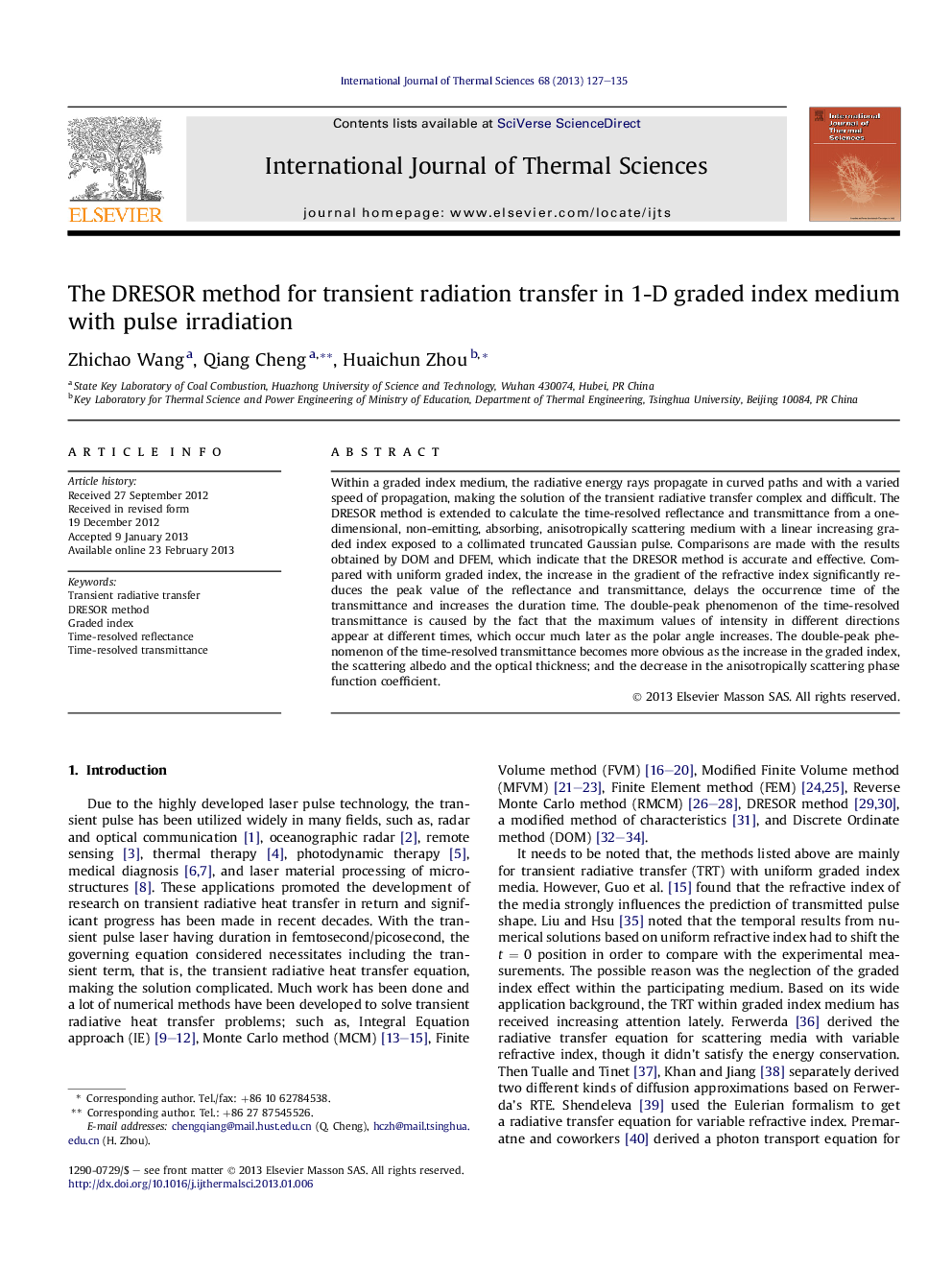| Article ID | Journal | Published Year | Pages | File Type |
|---|---|---|---|---|
| 668568 | International Journal of Thermal Sciences | 2013 | 9 Pages |
Within a graded index medium, the radiative energy rays propagate in curved paths and with a varied speed of propagation, making the solution of the transient radiative transfer complex and difficult. The DRESOR method is extended to calculate the time-resolved reflectance and transmittance from a one-dimensional, non-emitting, absorbing, anisotropically scattering medium with a linear increasing graded index exposed to a collimated truncated Gaussian pulse. Comparisons are made with the results obtained by DOM and DFEM, which indicate that the DRESOR method is accurate and effective. Compared with uniform graded index, the increase in the gradient of the refractive index significantly reduces the peak value of the reflectance and transmittance, delays the occurrence time of the transmittance and increases the duration time. The double-peak phenomenon of the time-resolved transmittance is caused by the fact that the maximum values of intensity in different directions appear at different times, which occur much later as the polar angle increases. The double-peak phenomenon of the time-resolved transmittance becomes more obvious as the increase in the graded index, the scattering albedo and the optical thickness; and the decrease in the anisotropically scattering phase function coefficient.
► The cause of the double-peak phenomenon of the time-resolved transmittance is analyzed. ► Variation of the peak value of the reflectance and transmittance and the occurrence time of the transmittance are analyzed. ► The time-resolved transmittance profile can give more deep insight into the medium than the reflectance profile.
